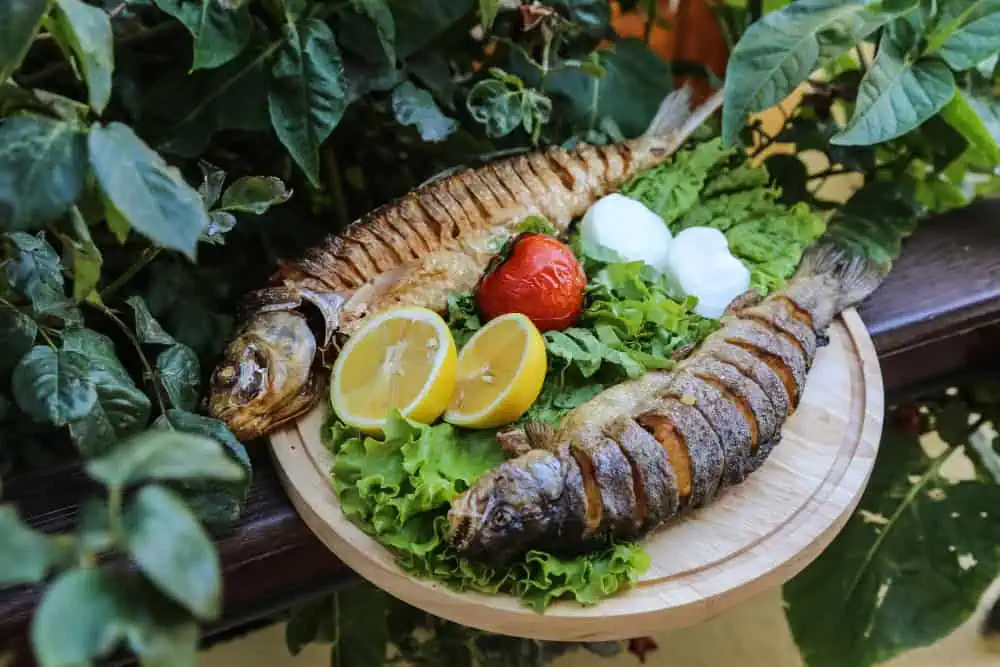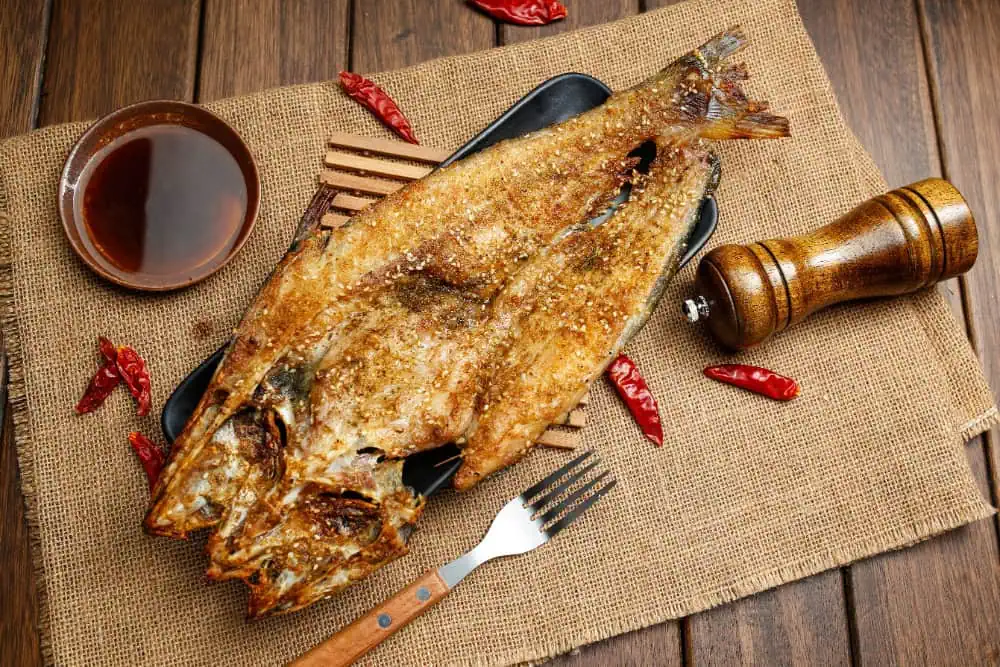When it comes to choosing the perfect fish for your meals, branzino often pops up as a top contender. But the question remains: Is branzino a good fish to eat? In this comprehensive guide, we’ll delve into everything you need to know about branzino, from its nutritional benefits to the best ways to prepare it. Whether you’re a seasoned seafood lover or new to fish cuisine, this article will provide valuable insights to help you make informed choices in the kitchen.
What is Branzino?
Branzino, also known as European sea bass, is a popular fish in Mediterranean cuisine. Renowned for its delicate flavor and flaky texture, branzino has become a favorite choice in both home kitchens and upscale restaurants alike.
If you want to know more about branzino’s origins and similar species, read our quick guide on branzino here.
Origin and Popularity
Originally native to the Mediterranean Sea and the eastern Atlantic Ocean, branzino has gained international acclaim for its versatility and mild taste. Its popularity has soared due to its adaptability in various cooking methods and its appeal to a broad range of palates. In recent years, branzino has become a staple on many restaurant menus, often served whole and grilled, showcasing its beautiful presentation.
Nutritional Benefits of Eating Branzino
One of the primary reasons people choose branzino is its impressive nutritional profile. Let’s explore the key nutrients that make branzino a healthy addition to your diet.
Omega-3 Fatty Acids
Branzino is rich in omega-3 fatty acids, which are essential for heart health. These healthy fats help reduce inflammation, lower blood pressure, and decrease the risk of heart disease. Regular consumption of omega-3s is linked to improved brain function and a lower risk of chronic diseases.
Protein Content
A single serving of branzino provides a substantial amount of high-quality protein. Protein is crucial for muscle repair, immune function, and overall body maintenance. For those looking to maintain a balanced diet, branzino offers a lean source of protein that can help meet daily requirements without excess calories.
Vitamins and Minerals
Branzino contains essential vitamins and minerals, including:
- Vitamin B12: Important for nerve function and the production of DNA.
- Vitamin D: Vital for bone health and immune support.
- Selenium: An antioxidant that protects cells from damage.
- Potassium: Helps regulate fluid balance and muscle contractions.
Caloric Content
Branzino is relatively low in calories, making it an excellent choice for those looking to maintain or lose weight. A typical serving (about 3.5 ounces or 100 grams) contains approximately 120 calories, making it a nutritious option that can fit into various dietary plans.
Taste and Texture: What to Expect
Understanding the taste and texture of branzino can help you decide if it’s the right fish for your culinary needs.
Flavor Profile
Branzino boasts a mild, slightly sweet flavor that is not overpowering. Its subtle taste makes it an excellent canvas for various herbs, spices, and marinades. This versatility allows it to pair well with a wide range of ingredients, from citrus to garlic, enhancing its natural flavors.
Texture Comparison
The flesh of branzino is tender and flaky, making it easy to cook without becoming dry. Compared to other fish like salmon, branzino is lighter and less oily, offering a more delicate eating experience. This texture makes it ideal for grilling, baking, or pan-searing, as it holds up well to various cooking methods.
For a full guide on preparing and cooking branzino, check out our complete branzino cooking guide.
How to Cook Branzino
Cooking branzino is relatively straightforward, and its versatility allows for numerous preparation methods. Here are some popular ways to prepare this delicious fish:
Grilling
Grilling branzino enhances its natural flavors and gives the skin a crispy texture. Simply season with olive oil, herbs, and lemon before placing it on a hot grill for a few minutes on each side. Grilling whole branzino is particularly popular, as it allows the skin to crisp up while keeping the flesh moist.
For step-by-step Mediterranean-inspired recipes, explore our detailed branzino recipe guide.
Baking
Baking is a healthy and easy method to cook branzino. Place the fish in a baking dish, add your favorite vegetables, drizzle with olive oil, and bake until the flesh flakes easily with a fork. Baking branzino with lemon slices and fresh herbs creates a fragrant and flavorful dish.
Pan-Seared
Pan-searing branzino creates a beautiful golden crust while keeping the interior moist. Cook the fish skin-side down first to achieve that perfect crispy skin. This method is quick and allows for a delicious caramelization of the fish.
To learn about the benefits of eating branzino skin, check out our tips and recipes for branzino skin.
Steaming
Steaming is another healthy cooking method that preserves the delicate flavor and moisture of branzino. You can steam the fish with ginger, garlic, and scallions for an Asian-inspired dish that is both light and flavorful.
Poaching
Poaching branzino in a flavorful broth or white wine can infuse the fish with additional taste while keeping it tender. This method is excellent for creating a light and elegant dish that pairs well with fresh herbs and vegetables.
Sustainability and Environmental Impact
Considering the environmental impact of your seafood choices is essential. Here’s what you need to know about the sustainability of branzino.
Farming vs. Wild-Caught
Branzino is available both wild-caught and farmed. Sustainable farming practices ensure that branzino populations remain healthy and ecosystems are protected. Look for certifications like the Aquaculture Stewardship Council (ASC) to ensure responsible farming.
Sustainability Certifications
Choosing branzino with reputable sustainability certifications helps support environmentally friendly practices. Certifications to consider include:
- Marine Stewardship Council (MSC): Ensures that wild-caught fish are sourced sustainably.
- Aquaculture Stewardship Council (ASC): Focuses on responsible farming practices.
- Best Aquaculture Practices (BAP): Promotes responsible aquaculture through comprehensive standards.
Impact on Marine Ecosystems
Sustainable fishing and farming practices are crucial for maintaining healthy marine ecosystems. Overfishing and unsustainable practices can lead to the depletion of fish populations and damage to habitats. By choosing sustainably sourced branzino, you contribute to the health of our oceans and support responsible fishing practices.

Health Benefits and Considerations of Eating Branzino
While branzino is generally a healthy choice, there are a few considerations to keep in mind.
Low Mercury Levels
Branzino typically has lower mercury levels compared to larger fish like tuna or swordfish. This makes it a safer option, especially for pregnant women and young children. Consuming fish with lower mercury levels is essential for minimizing potential health risks associated with mercury exposure.
Allergic Reactions
As with any seafood, some individuals may have allergic reactions to branzino. If you have a known fish allergy, it’s best to consult with a healthcare professional before consuming branzino. Symptoms of a fish allergy can range from mild to severe, so it’s important to be cautious.
Cooking Methods and Health
The way you prepare branzino can also impact its health benefits. Opting for grilling, baking, or steaming rather than frying can help retain its nutritional value while keeping the dish light and healthy. Pairing branzino with fresh vegetables and whole grains can create a balanced meal.
Looking to elevate your soups as well? Discover the secret ingredient that takes soups to the next level.
Comparing Branzino to Other Fish
To better understand branzino’s place in your diet, let’s compare it to some other popular fish.
Branzino vs. Salmon
- Flavor: Branzino is milder, whereas salmon has a richer, more pronounced flavor.
- Texture: Branzino is flakier and less oily, making it lighter on the palate.
- Nutritional Content: Both are high in omega-3s, but salmon contains more fat overall. Salmon is also a great source of vitamin D, while branzino offers a broader range of vitamins and minerals.
Tilapia vs. Branzino
- Flavor: Tilapia has a slightly stronger, often considered “muddy” taste, while branzino is more delicate.
- Sustainability: Responsibly farmed branzino generally has better sustainability ratings compared to tilapia, which can be associated with less sustainable farming practices.
- Nutritional Content: Both are good sources of protein, but branzino typically offers more vitamins and minerals, making it a more nutrient-dense option.
Cod vs. Branzino
- Flavor: Cod has a mild flavor similar to branzino but is often described as slightly sweeter.
- Texture: Cod is firmer and meatier, while branzino is more delicate and flaky.
- Culinary Uses: Both fish can be used in a variety of dishes, but branzino is often served whole, while cod is commonly filleted and used in fish and chips or chowders.
Best Ways to Serve Branzino
When it comes to serving branzino, presentation and pairing are key to enhancing its natural flavors.
Lemon and Herbs
A classic combination, lemon and fresh herbs like rosemary, thyme, or parsley complement the mild taste of branzino beautifully. A simple drizzle of olive oil and a squeeze of lemon juice can elevate the dish.
Mediterranean-Inspired
Serve branzino with Mediterranean staples such as olives, capers, tomatoes, and a drizzle of extra virgin olive oil for a vibrant and flavorful meal. This combination not only enhances the taste but also adds a colorful presentation to your plate.
With Vegetables
Pairing branzino with roasted or steamed vegetables adds color, nutrition, and texture to your plate. Seasonal vegetables like asparagus, zucchini, or bell peppers work well, providing a fresh and healthy accompaniment.
In Salads
Flaked branzino can be added to salads for a protein boost. Combine it with mixed greens, cherry tomatoes, cucumbers, and a light vinaigrette for a refreshing meal. This is a great way to enjoy branzino in a lighter format, especially during warmer months.
Tacos and Wraps
For a fun twist, consider using branzino in tacos or wraps. Flake the cooked fish and serve it in corn tortillas with avocado, cabbage slaw, and a zesty lime crema for a delicious and unique meal.
Where to Buy Fresh Branzino
Finding fresh branzino is essential for the best taste and quality. Here are some reliable sources:
Local Fish Markets
Local fish markets often carry fresh branzino, providing an opportunity to speak directly with fishmongers about the sourcing and freshness of the fish. Building a relationship with your local fishmonger can also lead to discovering seasonal catches and special deals.
Supermarkets
Many well-stocked supermarkets offer branzino in their seafood sections, both fresh and frozen. Look for fish that appears moist and has a clean, ocean-like smell. Avoid fish with a strong, fishy odor, as this can indicate spoilage.
Online Seafood Retailers
Online retailers specialize in delivering fresh seafood straight to your door. Ensure you choose a reputable provider that guarantees quality and freshness. Many online seafood markets offer sustainable options and can provide information about the sourcing of their fish.
Cost and Availability
Understanding the cost and availability of branzino can help you plan your meals better.
Price Comparison
Branzino is generally priced similarly to other premium fish like salmon or halibut. Prices can vary based on factors such as location, season, and whether the fish is wild-caught or farmed. On average, you can expect to pay between $15 to $25 per pound for fresh branzino.
Seasonality
While branzino is available year-round, it’s most abundant in the warmer months. During off-seasons, availability may decrease, and prices might rise slightly. If you’re looking for the best deals, consider purchasing branzino during its peak season, which typically runs from late spring to early fall.

FAQs
Is branzino the same as European sea bass?
Yes, branzino is the Italian name for European sea bass. They are the same species and can be used interchangeably in recipes.
How healthy is branzino?
Branzino is a nutritious choice, rich in omega-3 fatty acids, high-quality protein, and essential vitamins and minerals. Its low mercury levels make it a safe option for regular consumption.
How to fillet branzino?
Filleting branzino involves removing the head, scaling the fish, and carefully cutting along the backbone to separate the fillet. It’s recommended to use a sharp knife and follow a detailed guide or watch a tutorial if you’re new to fish filleting.
Can branzino be frozen?
Absolutely! Branzino can be frozen to extend its shelf life. For best results, wrap the fish tightly in plastic wrap and place it in an airtight container or freezer bag to prevent freezer burn.
What sauces pair well with branzino?
Delicate sauces such as a lemon beurre blanc, herbaceous chimichurri, or a simple olive oil and garlic dressing complement the mild flavor of branzino without overpowering it.
How do you know when branzino is cooked?
Branzino is cooked when the flesh is opaque and flakes easily with a fork. The internal temperature should reach 145°F (63°C) for safe consumption. Using a meat thermometer can help ensure perfect doneness.
Is branzino sustainable?
When sourced from responsible fisheries or farms, branzino can be a sustainable choice. Look for certifications like MSC or ASC to ensure that your fish is sourced sustainably.
Conclusion
So, is branzino a good fish to eat? The answer is a resounding yes! Branzino offers a delightful combination of taste, texture, and nutritional benefits, making it an excellent choice for a healthy and satisfying meal. Its versatility in cooking methods and ability to pair well with various flavors make it a favorite among chefs and home cooks alike. Additionally, when sourced sustainably, branzino is an environmentally responsible option that supports healthy marine ecosystems.
Whether you’re grilling it to perfection, baking it with fresh herbs, or pan-searing for a crispy finish, branzino is sure to impress your taste buds and nourish your body. So next time you’re at the seafood market or planning your menu, consider adding branzino to your list of go-to fish—you won’t be disappointed!

